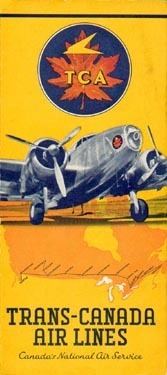 | ||
Trans canada air lines vickers viscount dvd preview
Trans-Canada Air Lines (also known as TCA in English, and Air Canada in French) was a Canadian airline that operated as the country's flag carrier. Its corporate headquarters were in Montreal, Quebec. Its first president was Gordon Roy McGregor.
Contents
- Trans canada air lines vickers viscount dvd preview
- Genesis
- Postwar
- Changes
- Routes
- Notable accidents and incidents
- Survivors
- References
In English-language contexts, the airline operated as TCA from 1937 to 1965, when it was renamed Air Canada.
Genesis
With heavy involvement from C. D. Howe, a senior minister in the Mackenzie King cabinet, TCA was created by the Crown Corporation Canadian National Railways (CNR), and launched its first flight on September 1, 1937, on a flight between Vancouver and Seattle. An air-mail contract with Canada Post was one of the methods by which TCA was financed.
The creation of TCA was partly by CNR management who wanted to expand the company into the new field of passenger aviation, and was partly by government direction. Prior to TCA, no large national airline existed in Canada. With war looming, and other nations (primarily the U.S.) experiencing major increases in the creation of passenger airlines, it was necessary to have a presence. The CNR was the country's largest corporation at the time and proved an effective vehicle for the government to create a national airline.
TCA was also in direct competition with passenger trains operated by parent CNR, and contributed to the decline of passenger rail service as Canada entered the pioneering years of air travel. In response to CNR's creation of TCA, arch-rival Canadian Pacific Railway created Canadian Pacific Air Lines in 1942.
Between 1943 and 1947, TCA operated the Canadian Government Trans-Atlantic Air Service (CGTAS) to provide trans-Atlantic military passenger and postal delivery service using Avro Lancastrian (modified Avro Lancaster) aircraft. The record crossing was completed non-stop in 12:26 hours; the average was about 13:25 hours. CGTAS ushered in the era of commercial air travel across the North Atlantic. After the war, the Lancastrians became part of TCA and carried paying civilian passengers until they were replaced by Douglas DC-4s.
Postwar
Starting in 1945, TCA acquired 30 twin-engined ex-military Douglas DC-3s for use on Canadian internal services and some of these remained in service until 1963 on shorter routes. A fleet of Merlin-powered Canadair North Stars was delivered from 1947 and these commenced services to several European countries, including the United Kingdom and to cities in the USA. The last of the North Stars was sold in 1961.
The Canadair North Stars were gradually replaced by longer range Lockheed Super Constellations from 1954 onwards, fourteen being operated on transatlantic routes extending as far as Vienna in Austria; also to Bermuda and several Caribbean destinations including Jamaica and Trinidad. The last Super Constellations were disposed of in 1963. A large fleet of Vickers Viscount turboprop airliners was built up from late 1954 and these were used on many intra-North American routes. The Viscount was followed by the larger Vickers Vanguard turboprop. TCA was the only airline in North America to operate the Vanguard in scheduled passenger service.
In 1953 with the development of ReserVec (originally called Gemini), TCA became the first airline in the world to use a computer reservation system with remote terminals.
The airline's Winnipeg maintenance shops and its first trial flight of the Viscount was documented in the 1955 film, Routine Flight.
The airline acquired a fleet of Douglas DC-8 jet airliners powered by Rolls Royce Conways, the first being received on 25 May 1960. The DC-8 quickly replaced the slower Super Constellations on TCA's scheduled services to Europe.
Changes
In 1964, an Act of Parliament proposed by Jean Chrétien changed the name of Trans-Canada Air Lines to "Air Canada", which was already in use as the airline's French-language name, effective 1 January 1965. In 1978, Air Canada was divested by parent CNR and became a separate Crown corporation. Air Canada was privatized in 1989.
Routes
TCA operated a network of 160 routes to destinations including:
Notable accidents and incidents
Trans-Canada Airlines had 13 aircraft accidents resulting in hull losses, with a total of 248 fatalities, between 1938 and 1963. These included:
Survivors
One former TCA Lockheed L-1049G Super Constellation (CF-TGE), has been preserved by The Museum of Flight in Seattle, Washington. It is currently on display at the Museum's "Airpark" attraction.
A former TCA Vickers Viscount (CF-THG) is on display at the British Columbia Aviation Museum in Sydney BC the aircraft completely refurbished by the air museum
